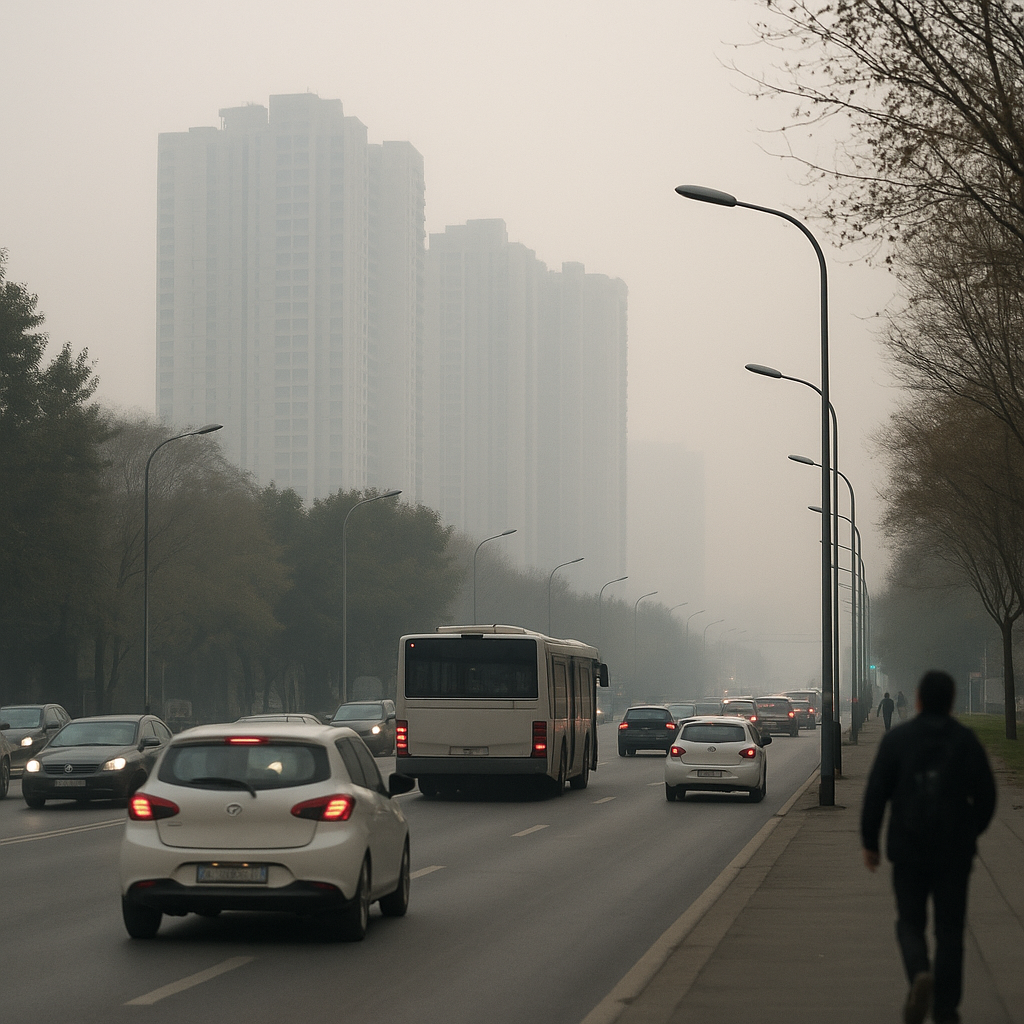Hybrid AI system tracks microscopic airborne pollutants with high accuracy
PM2.5 and PM10 are among the most pervasive pollutants in urban areas, originating from vehicle emissions, industrial activity, construction, and residential fuel use. PM10, which includes particles with diameters under 10 microns, predominantly affects the upper respiratory tract. In contrast, PM2.5 particles, with diameters smaller than 2.5 microns, penetrate deep into the lungs and even enter the bloodstream. Exposure to these pollutants is linked to respiratory diseases, cardiovascular conditions, cognitive decline, and various forms of cancer.

Researchers have developed a deep hybrid artificial intelligence (AI) model capable of predicting air pollution levels with unprecedented accuracy. The study introduces a scalable, intelligent solution to monitor and forecast concentrations of particulate matter (PM2.5 and PM10), two of the most harmful air pollutants affecting human health and the environment.
Published in the Applied Sciences journal under the title "On the Prediction and Forecasting of PMs and Air Pollution: An Application of Deep Hybrid AI-Based Models", the research addresses the urgent need for accurate, real-time air quality prediction frameworks. The study targets hourly pollution forecasting using data from a five-year period (2020–2024) in Craiova, Romania, collected through four government-operated air quality monitoring stations. The novel system integrates advanced machine learning and deep learning algorithms with sophisticated preprocessing and feature selection strategies to produce actionable forecasts for policy-makers and health authorities.
How can hybrid AI models improve air quality forecasting?
Traditional air quality models often rely on static algorithms and limited feature inputs, which restrict their ability to adapt to nonlinear environmental conditions. To resolve this, the researchers introduced a multi-phase pipeline combining deep learning, hybrid modeling, and feature optimization techniques.
The methodology involves a three-phase approach. Initially, the authors implemented rigorous data preprocessing to handle anomalies, fill missing data points, and normalize the input from 20 meteorological and pollution-related variables. These inputs include essential predictors such as temperature, humidity, wind speed, wind direction, traffic density, and pollutant interactions. The second phase involved exploratory data analysis to determine correlations and seasonal trends between these variables and particulate matter levels.
In the third and most crucial phase, the authors tested 23 AI models, including ensemble machine learning and neural networks, enhanced by 50 feature selection techniques. The standout performer was a Deep-NARMAX (Nonlinear AutoRegressive Moving Average with eXogenous inputs) model. This model demonstrated high temporal learning capacity and handled nonlinear dependencies with remarkable proficiency. It successfully achieved R² values of 0.85 for PM2.5 and 0.89 for PM10, indicating a high degree of accuracy when tested against real-world hourly pollution data.
The GEO-based feature selection method was instrumental in refining the model’s predictive inputs. By systematically filtering irrelevant variables, it enhanced model performance and interpretability, allowing the AI to focus on the most influential factors impacting air quality. The authors argue that such an approach allows for enhanced generalization, making the model applicable to different cities and environmental conditions.
What are the health and environmental stakes in accurate PM forecasting?
PM2.5 and PM10 are among the most pervasive pollutants in urban areas, originating from vehicle emissions, industrial activity, construction, and residential fuel use. PM10, which includes particles with diameters under 10 microns, predominantly affects the upper respiratory tract. In contrast, PM2.5 particles, with diameters smaller than 2.5 microns, penetrate deep into the lungs and even enter the bloodstream. Exposure to these pollutants is linked to respiratory diseases, cardiovascular conditions, cognitive decline, and various forms of cancer.
Additionally, the environmental impact of particulate matter is equally severe. Air pollution disrupts ecosystem balance by damaging flora and fauna, reducing agricultural productivity, and altering soil chemistry. Acid rain, biodiversity degradation, and increased vulnerability to invasive species are all documented consequences of unchecked PM concentrations. The researchers argue that AI-based systems capable of real-time forecasting and early warnings could provide critical lead time for decision-makers to implement mitigation strategies such as traffic restrictions or industrial emission controls.
Moreover, integrating such AI models into smart city infrastructure could automate environmental response systems. For instance, real-time forecasts could trigger adaptive traffic signals, automated air filtration protocols in public buildings, or alert systems for vulnerable populations. The researchers highlight the potential of their model to serve as a foundational component in next-generation environmental management systems.
Can this AI framework be applied beyond one city?
While the model was trained and validated using data from Craiova, its architecture is designed to accommodate datasets from other cities and regions. The use of 50 feature selection strategies allows the model to dynamically adapt to varying environmental contexts by identifying the most relevant predictors in each setting.
Despite the high accuracy achieved, the authors acknowledge several challenges that remain. Chief among them is the computational complexity of deep hybrid models, which may limit deployment in real-time systems with limited hardware resources. Additionally, there is a growing need for AI transparency and explainability. Policymakers and the public must be able to understand how predictions are generated, particularly when they inform public health decisions. To that end, future iterations of the model may integrate explainable AI (XAI) layers to provide interpretable outputs without compromising performance.
The authors advocate for the integration of their model into urban air quality monitoring systems and propose future collaborations with environmental agencies to validate the approach across diverse geographic areas. They also recommend embedding the model in edge computing frameworks for real-time performance in smart devices and urban sensors.
- FIRST PUBLISHED IN:
- Devdiscourse










